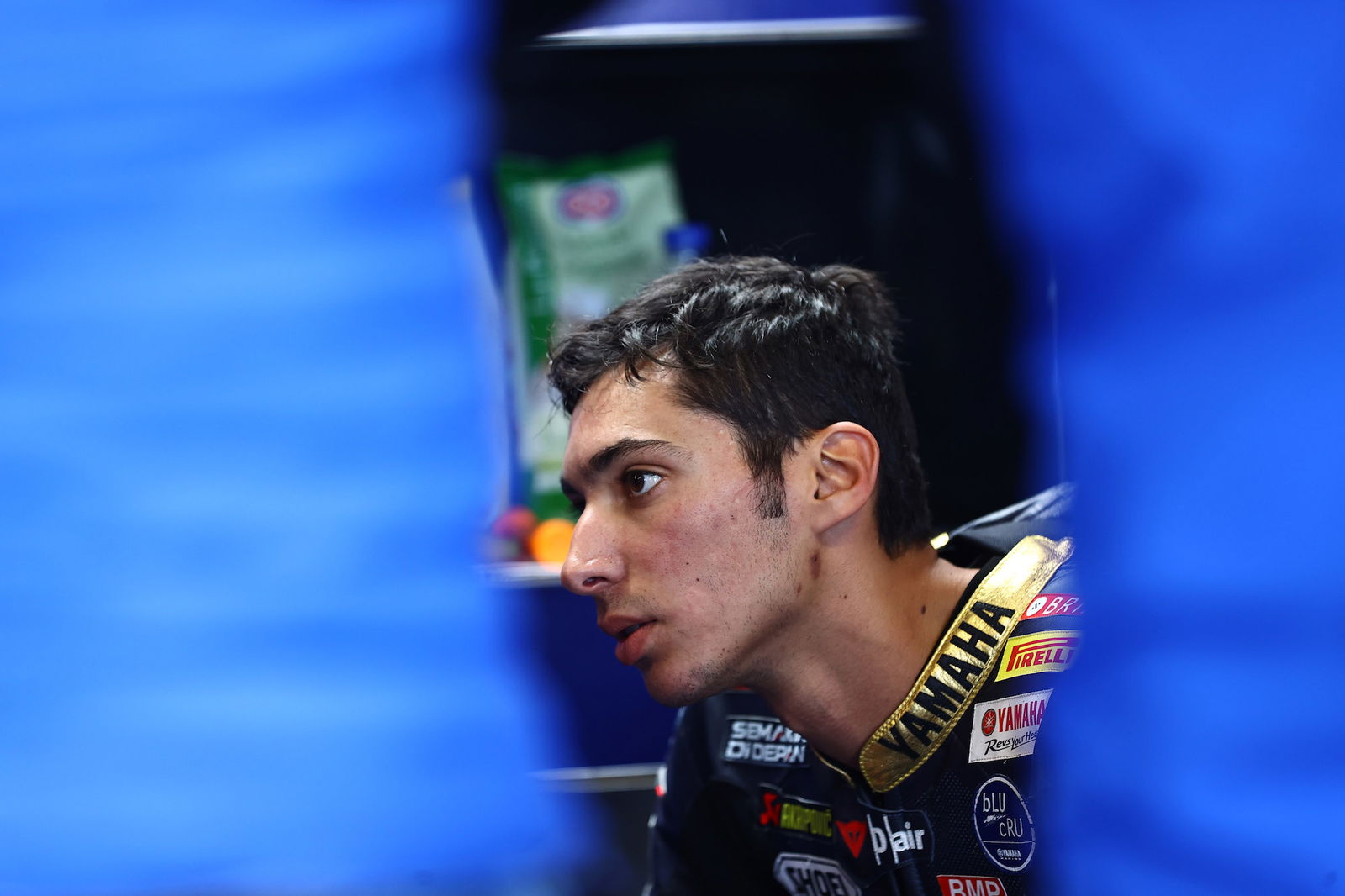MotoGP: Argentinian GP Winners and Losers
The second round of the 2023 MotoGP World Championship took place in Argentina, and offered the usual thrills and spills. So, who won, and who lost?

The 2023 MotoGP Argentinian Grand Prix was an odd weekend, with multiple riders missing, more holes exposed in the new weekend format, and changeable weather. As with any GP weekend, there were there were winners, and there were losers.
Winner - Marco Bezzecchi
As with Portimao, we will start the winners’ segment with the actual winner. Sure, that’s kind of dull, but that’s exactly how Marco Bezzecchi made the battle for the win on Sunday at the Autodromo Termas de Rio Hondo.
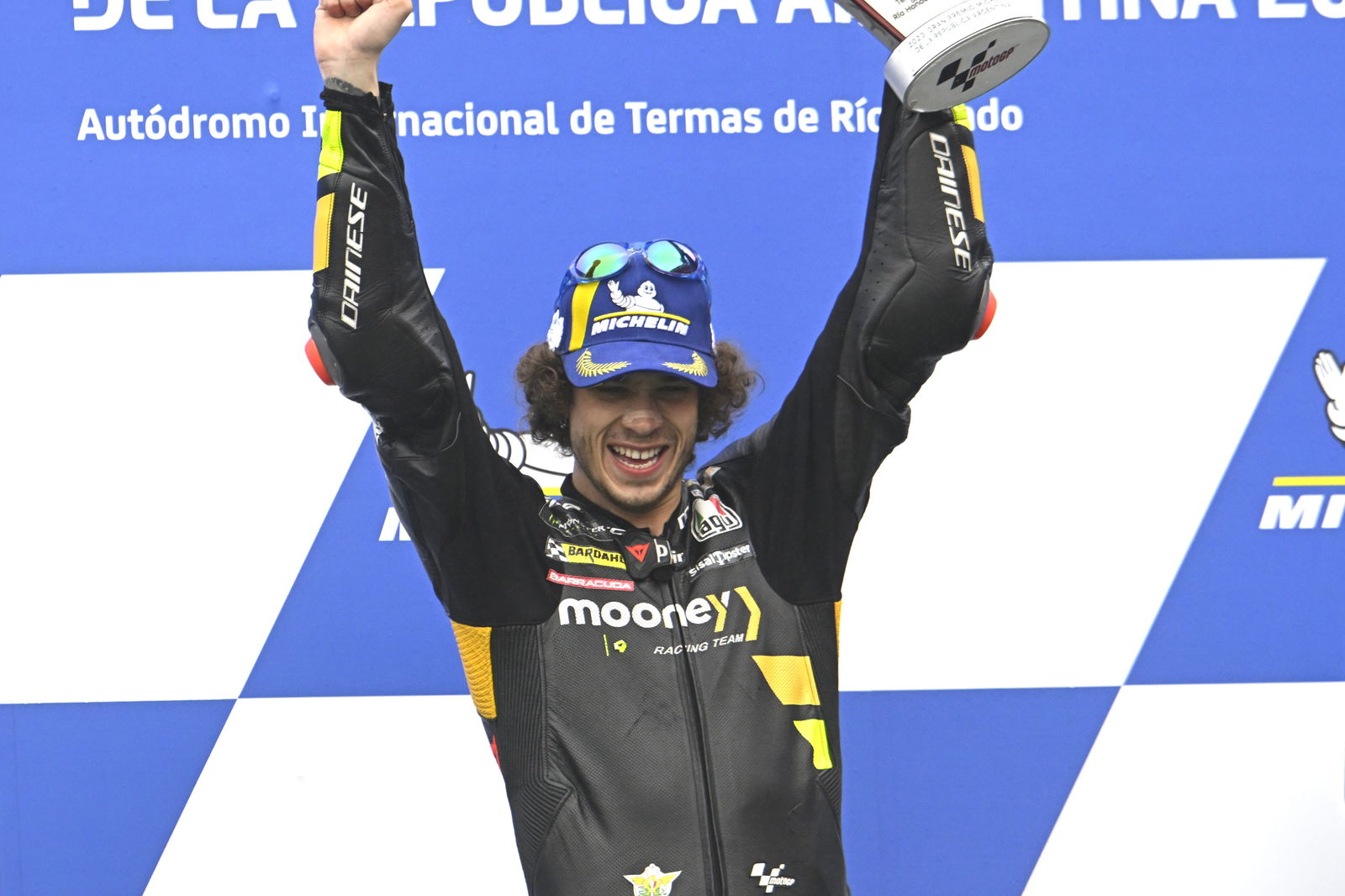
At one point, Bezzecchi’s lead in the wet Argentinian Grand Prix was over seven seconds, although he rolled the pace back a little in the closing laps, which saw second-placed Johann Zarco finish just over seven seconds behind the Italian.
It was a brilliant ride from Bezzecchi, although not without incident - a front slide at turn 13 almost saw it all slip away. We will come back to that corner later, but Bezzecchi’s performance at the site of his first Grand Prix win, back in 2018, to take his first premier class victory was little short of dominant.
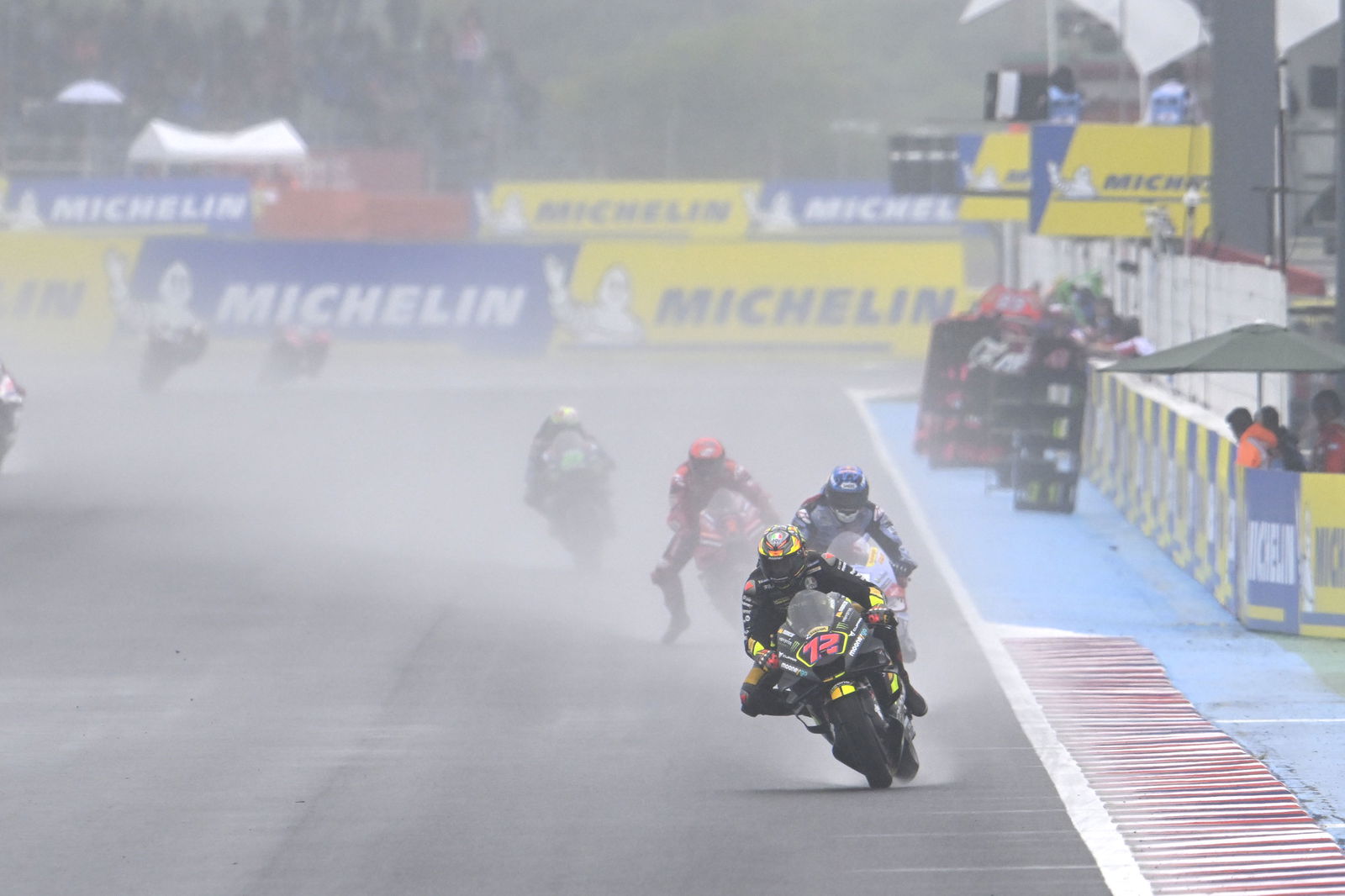
The #72 said before the start of the season that winning a Grand Prix was his primary target for the 2023 MotoGP season, and after two race weekends he has already achieved that.
Such a strong start to Bezzecchi’s season - he is the only rider with three podiums in the first four races, including Sprints, and now leads the championship by nine points - puts him in the kind of ‘Bastianini role’ for 2023.
Winner - Alex Marquez
Along with the aforementioned Marco Bezzecchi and Johann Zarco, Alex Marquez was able to complete a podium filled with only satellite Ducati riders. This is something which is numerically impossible for any other manufacturer in MotoGP to achieve, and highlights the strength in depth that the Bologna marque currently possesses.

But, for Marquez himself, the Argentinian Grand Prix was a confirmation that the low-key off-season excitement surrounding the #73 side of the Gresini Ducati garage was valid. His performances, both in the Sprint and in the Grand Prix, were superb, and both came after coming through Q1 to take pole position.
The apparent hole in Marquez’ game at the moment appears to be time attacks, which left him starting 13th in Portimao, and saw him forced to go through Q1 in Argentina, which he did despite crashing (again, at turn 13, which we will come back to).
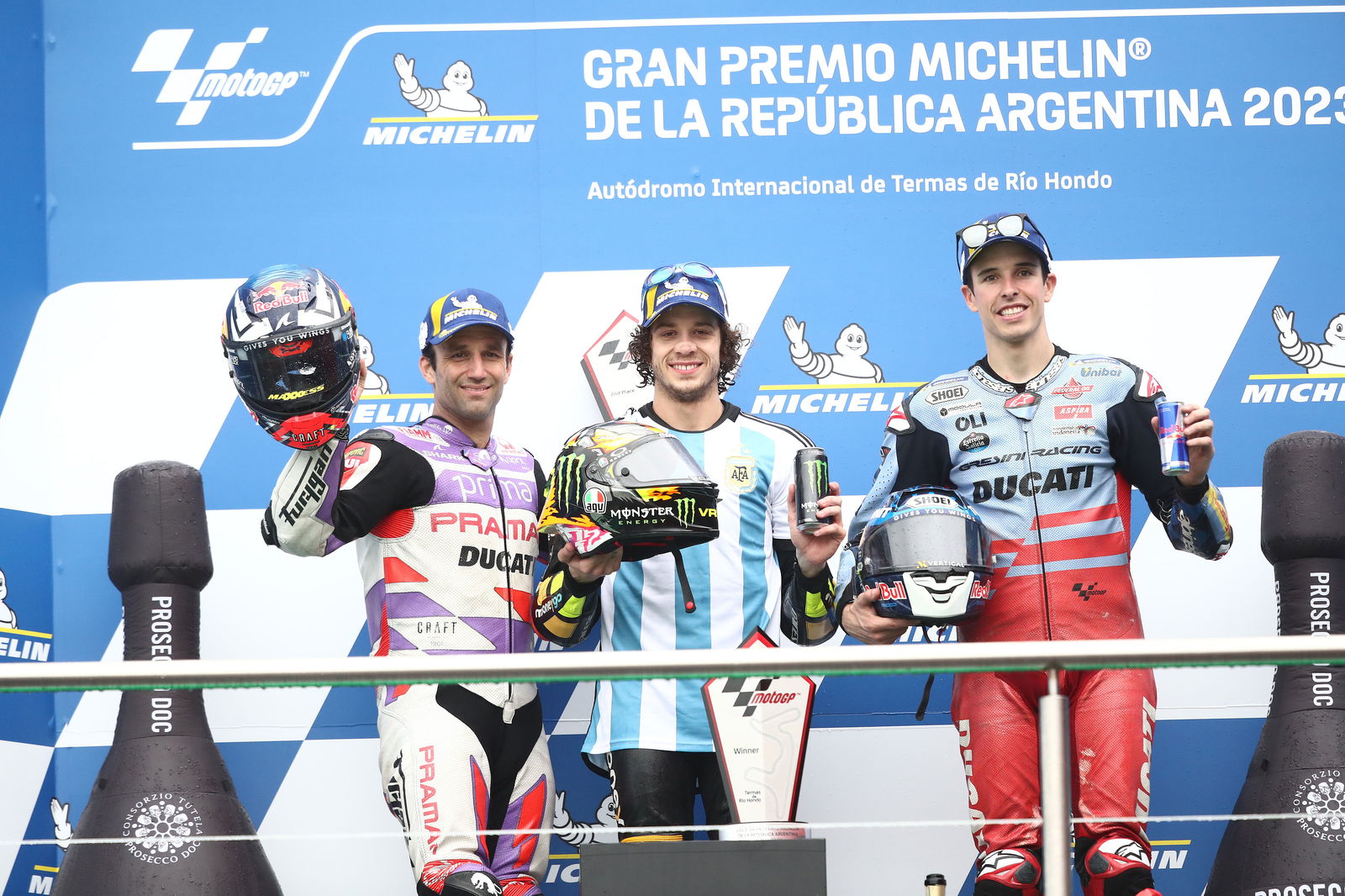
But, with the confidence he found in the rain, he was able to firstly take pole position, and then show his potential when starting from a decent position, which he missed in Portimao where he had a bad Sprint.
Marquez seems like he has the potential to win a race this year, which is even surpassing the expectations of the aforementioned off-season ‘hype’.
Winner - Franco Morbidelli
Since Franco Morbidelli joined the factory Yamaha team in the middle of 2021, he has generally been quite disappointing.

However, in Argentina, he was much better than Fabio Quartararo, and finished fourth in both the Sprint and Grand Prix, having also qualified fourth. It was a strong weekend for Morbidelli, and undoubtedly his strongest in the black and blue colours of the Monster Energy Yamaha squad.
There is reason to believe that this might not be the beginning of anything for Morbidelli, because it is possible that the low-grip surface in Argentina was of benefit to him. We will find out what Morbidelli has with higher grip once MotoGP returns to Europe, but there is no doubt that the Italian had his best weekend as a factory rider in Termas.
Loser - Francesco Bagnaia
It would also be possible to put Bagnaia in the winners’ section, since his crash in the Grand Prix on Sunday cost him only nine points to Fabio Quartararo, and none to either Marc Marquez or Enea Bastianini. If you consider Bagnaia’s main title rivals to be those three, then he came away in good shape.

But, he lost his points lead, made a mistake that characterised the downward spiral he took in the beginning of 2022, and failed to capitalise on the absence of two of his primary title rivals: Marquez and Bastianini.
Bagnaia remains in a position of great strength after the first two rounds, with 41 points over Bastianini, and 34 points over Marquez. But, he could have been much further ahead, had he not crashed out at turn 13 having just taken second place from Alex Marquez.
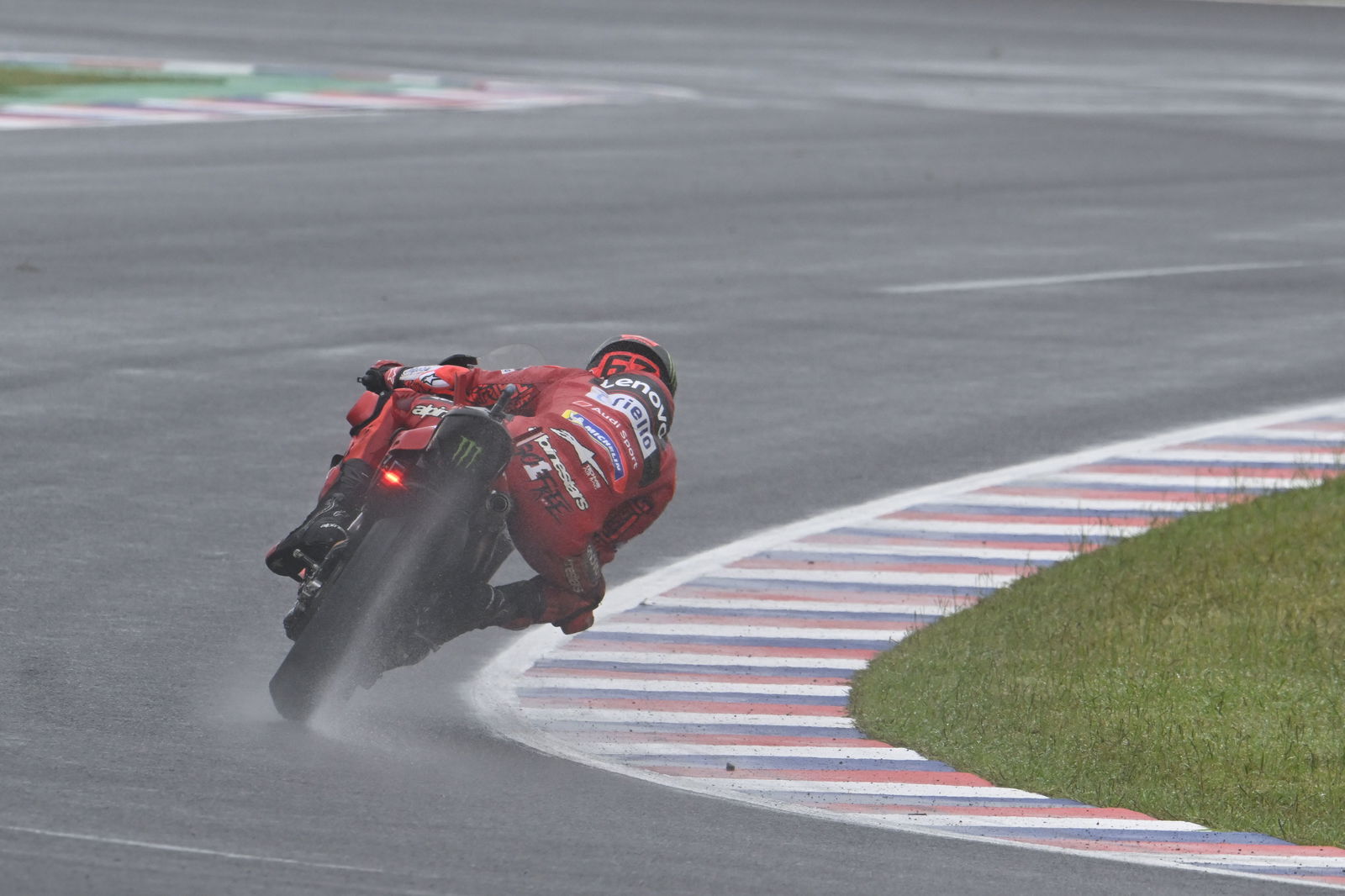
There were still reasons for Bagnaia to be positive, though, since Bezzecchi, who now leads the championship, is not a rider that the reigning champion will fear being nine points ahead of him (this could prove to be unfair on Bezzecchi, we shall see), and the #1 was stronger than all bar only Bezzecchi in the rain, whereas last year - before Thailand - he generally struggled in the wet.
But, despite the positives, the Grand Prix of the Americas has become a more important race from a points perspective than it otherwise might have been due to his mistake, to which his reaction in the coming weeks will be key to this year’s title battle.
Loser - Aprilia
Undoubtedly the biggest ‘loser’ in Argentina was Aprilia, who should have won both races, but instead had only one top 10 finish between their three riders across both races.
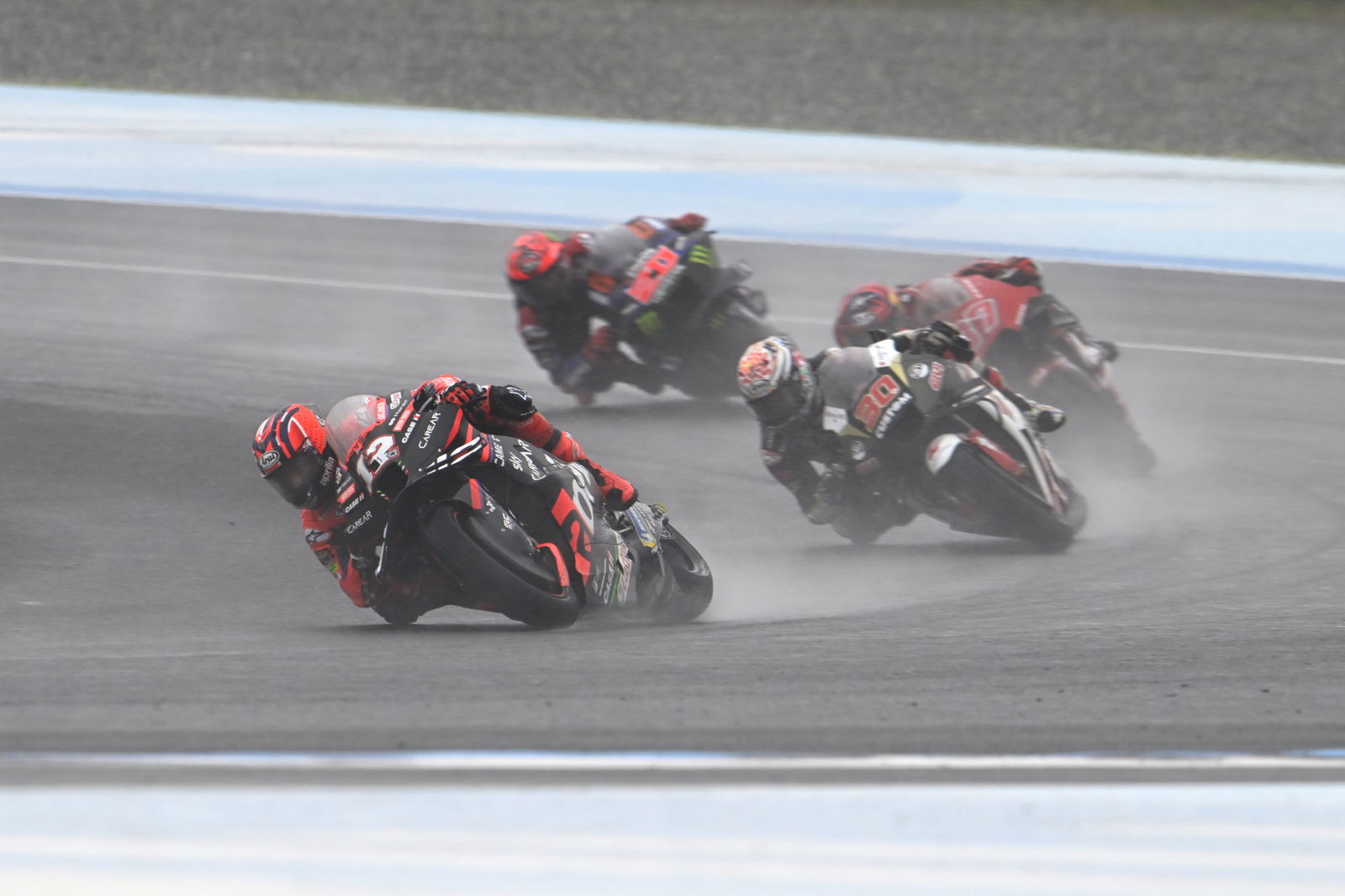
That top 10 finish went to Maverick Vinales in the Sprint, in which he was seventh, but in the Grand Prix he could only manage 12th, despite being the best Aprilia.
Argentina is clearly the best circuit for the RS-GP. The combination of long corners and low grip means it can continuously exploit its two strengths: corner speed and traction.
It seems, though, that when the track gets wet, those strong points become less prevalent, and in fact the second one - traction - goes away entirely, as Peter McLaren explained on the Crash MotoGP Podcast episode which reviewed the Argentinian Grand Prix.

These are issues which are likely to be resolved by a factory which works as quickly as Aprilia, but the lack of capitalisation on the brand’s best race track - where it scored its first MotoGP victory last year and where, this year, it scored only 10 points across the whole weekend with all three of its riders - is a disastrous result.
With Texas - Aleix Espargaro’s least favourite circuit - next up, it is likely going to be down to Vinales to maximise the RS-GP’s potential at the Circuit of the Americas.
Loser - FIM MotoGP Stewards
The role of a race steward is hardly going to be an enjoyable experience if you have any kind of care about what other people think of the decisions you make, because each one is going to make someone angry.

At the peak of a sport, though, it is important to be consistent, as said consistency allows an official to justify their decisions based on ones they have previously made.
MotoGP’s lead steward is Freddie Spencer, and undoubted great of motorcycle racing, a three-time World Champion, and the only rider to win both the 250cc World Championship and 500cc World Championship in the same year.
However, he is also becoming fairly well-known for questionable stewarding. Fabio Quartararo called the FIM MotoGP Stewards out for their inconsistency on Sunday, and with decent reason.
In the Moto3 race, Ayumu Sasaki passed David Almansa - a fill-in for the injured Joel Kelso in the CFMoto PruestelGP team - early in the race, and bumped the Spaniard on his way through. It was not a dangerous or malicious pass, it was simply opportunistic on Sasaki’s part following a slight mistake from Almansa. But, nonetheless, Sasaki received a long-lap penalty.
In the end, it didn’t affect the result of either Sasaki or Almansa, because Sasaki crashed all by himself a few laps after serving his penalty, and Almansa was cleaned out on the final lap by Scott Ogden, who received a six-second penalty for his troubles.
The six-second penalty for Ogden was a penalty equivalent to the anticipated time loss of a double-long-lap penalty, meaning his clattering into Almansa was worth three seconds more than Sasaki’s bump. As with any incident, they are both unique, and the written word cannot really convey the specific contexts of each incident, but to call the Ogden incident ‘three seconds worse’ than the Sasaki incident seems odd.
On the other hand, Ogden’s penalty was equal to that handed to Marc Marquez in Portimao, when he cleaned out Miguel Oliveira. But, the MotoGP riders were unhappy with that penalty, too, with some saying Marquez should be banned.
The real curiosity with the stewarding, though, came later in the day. First, Jaume Masia moved over on Almansa in braking for turn seven and made contact with his compatriot, but was not penalised.
Then, in the MotoGP race, Maverick Vinales made essentially the same move on Brad Binder as Sasaki made on Almansa, but Vinales was not penalised at all, despite Binder ending up on the floor.
Slightly later, Takaaki Nakagami ran into Fabio Quartararo at turn seven, pushing the Yamaha rider off the track and down to last. Nakagami was not penalised, either.
The problem this apparent inconsistency creates is that riders are not quite sure where the limit is for overtaking. The early laps in both Sprints and Grands Prix have been chaotic this year, with aggressive riding being obviously rewarded, and also not punished. Yet, on specific incidents, punishments have been handed out.
The inconsistency creates uncertainty, and the uncertainty creates distrust.
The 2023 MotoGP World Championship continues on 14-16 April with the Grand Prix of the Americas at the Circuit of the Americas in Austin, Texas.

